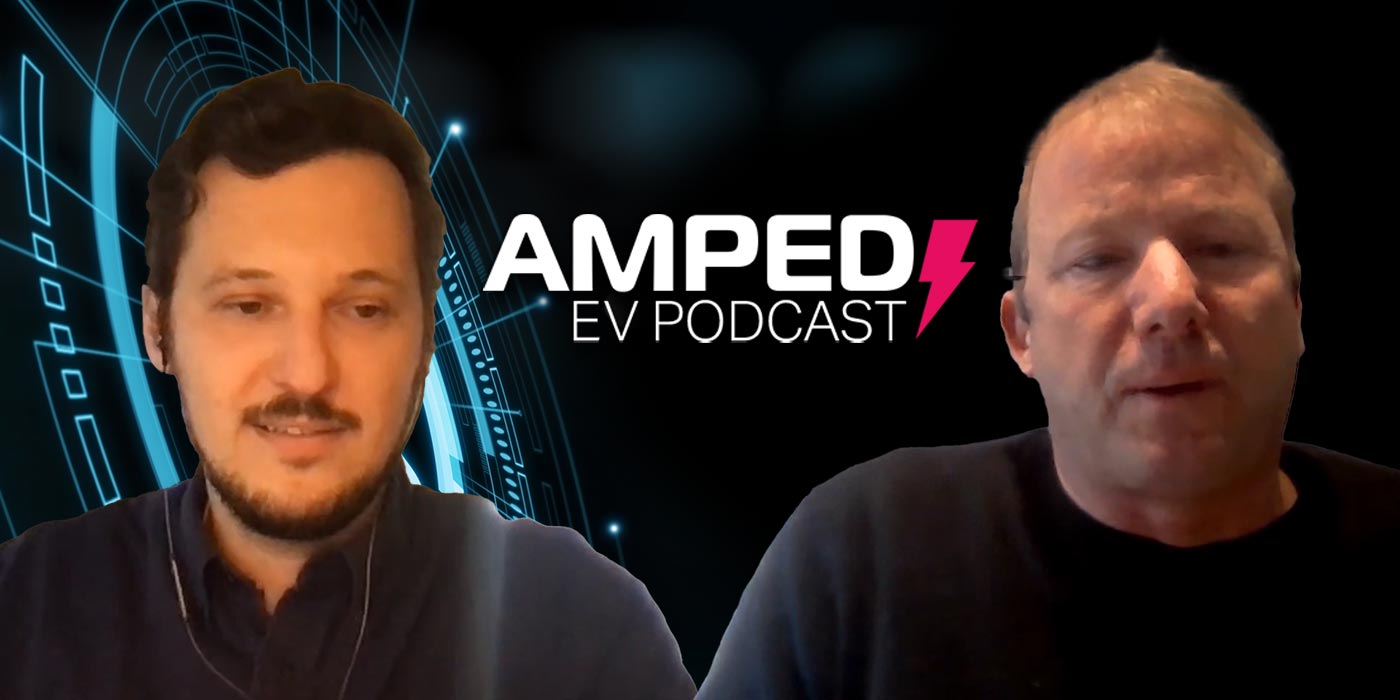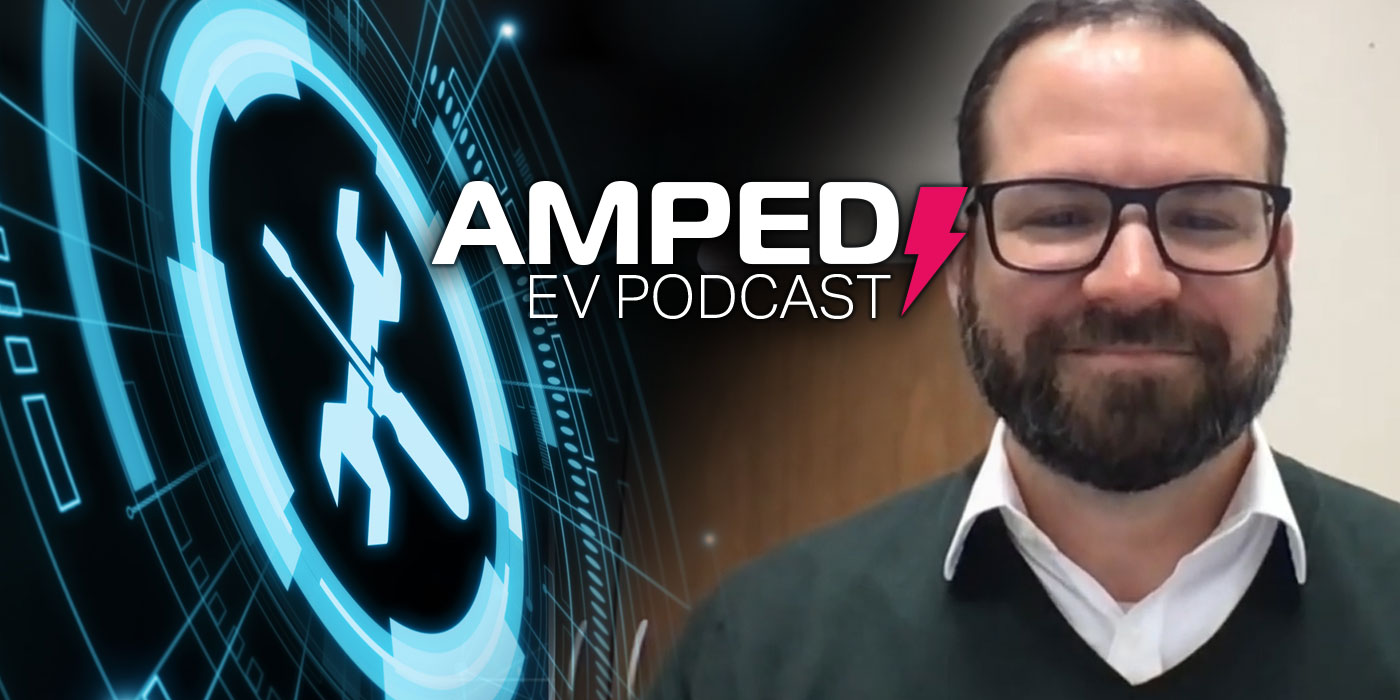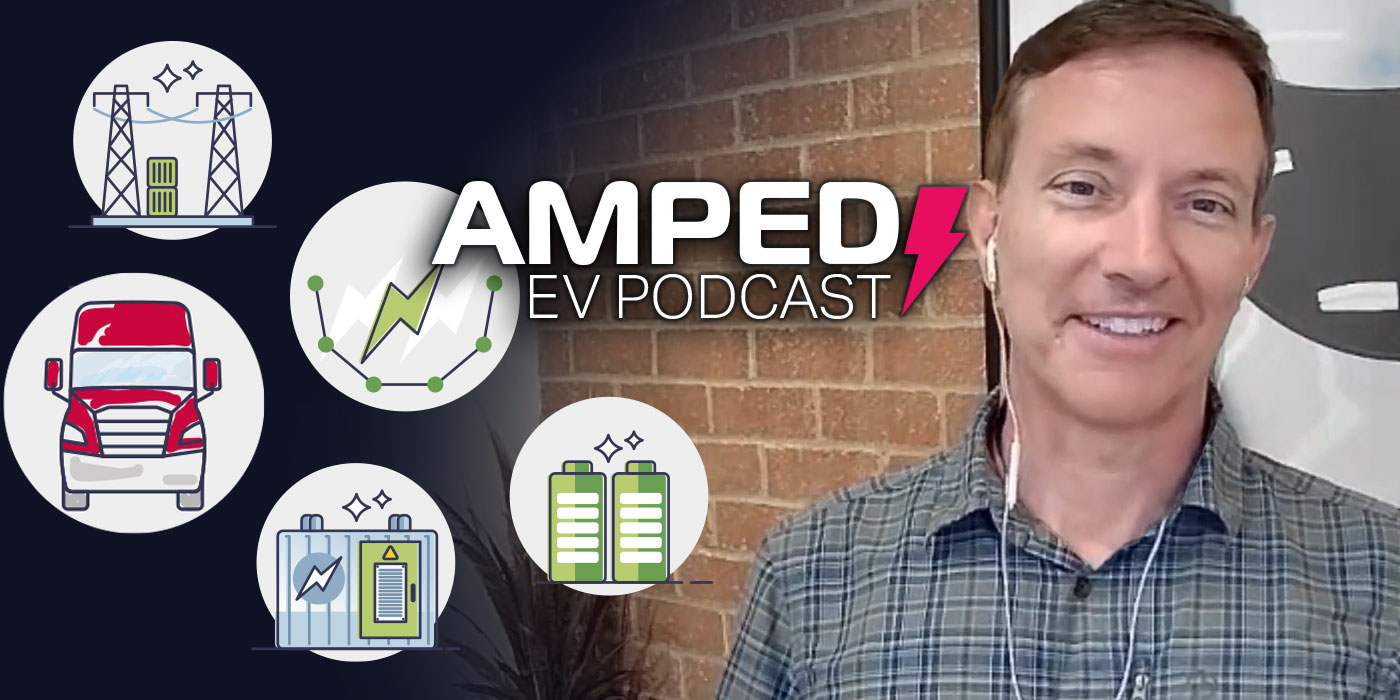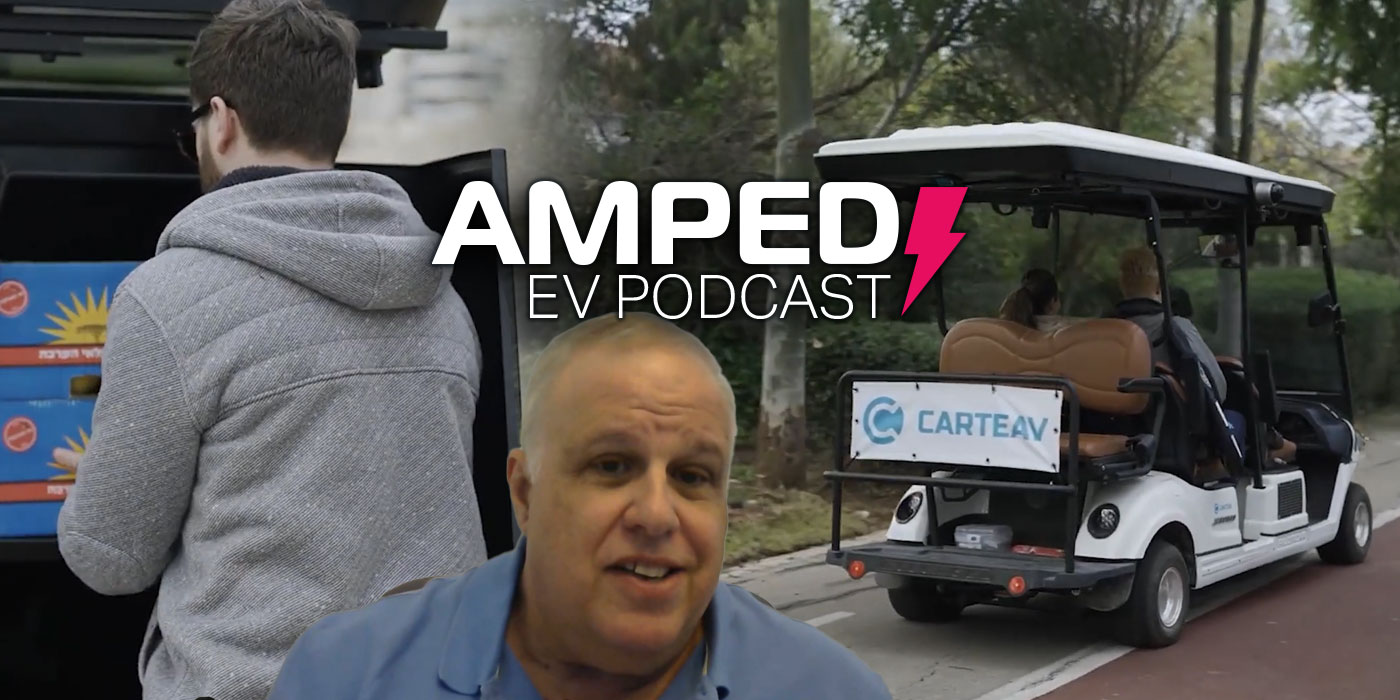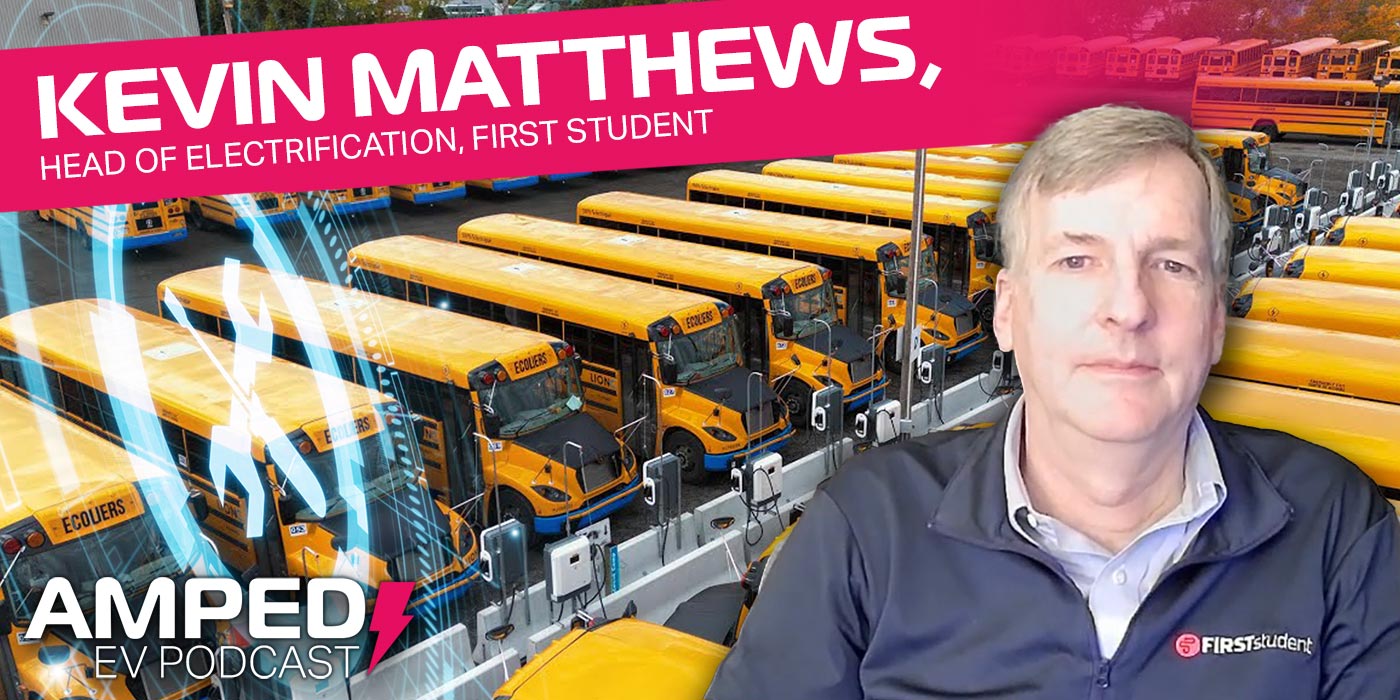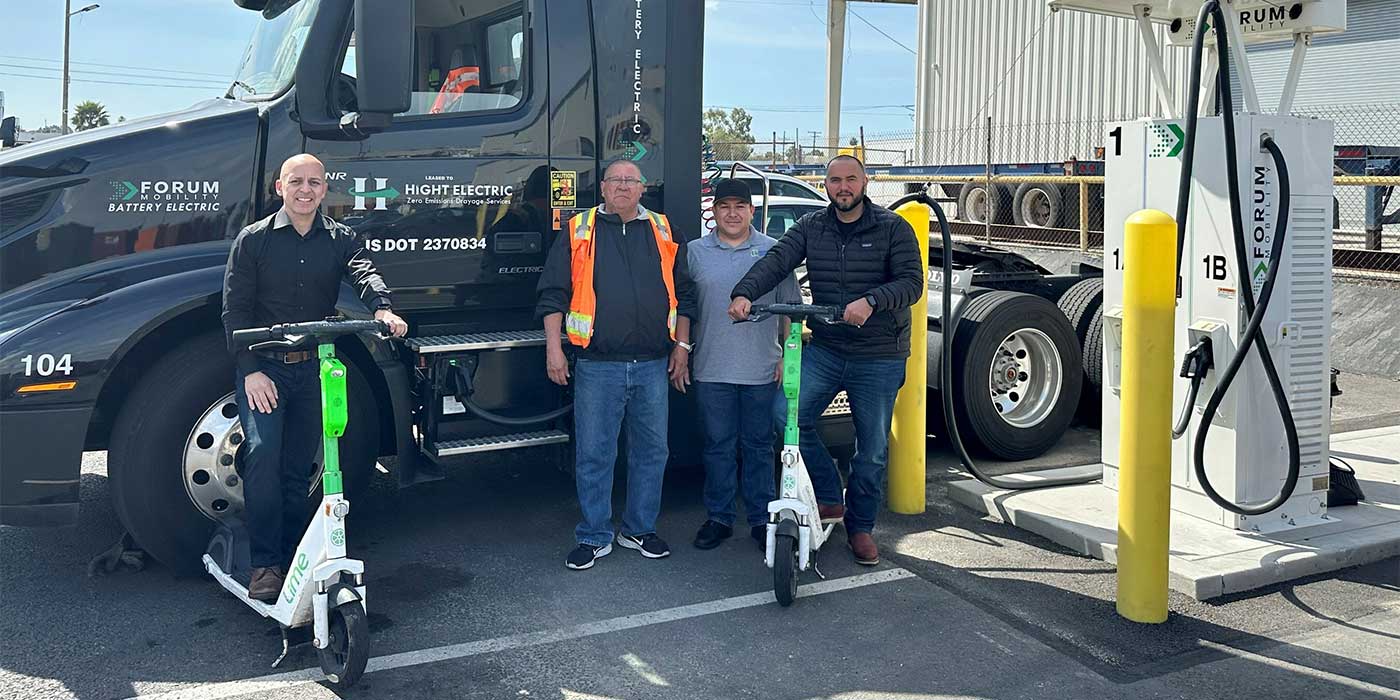Electric commercial trucks are out there, and fleets are starting to use them for shorter routes that work for their limited battery range. In these cases, the limited range has a workaround, but what about if you are limited in what cargo you can haul? That’s what is happening to trucks hauling goods that need to be kept cool. Typically there’s a workaround to that, too – if you don’t mind investing in a diesel generator to keep your load cool, and that doesn’t make a lot of sense when the tractor is electrified.
Enter the electric transportation refrigeration unit (TRU). The industry is just starting to break the surface on these, but Carrier Transicold has been one of the refrigeration pioneers leading the way. On this episode of The Amped EV Podcast, we talk to Mike Noyes, vice president and general manager, Carrier Transicold – Americas, to learn about what it takes to keep goods cool on the road without the use of diesel.
Want more Amped EV podcast? Click here.
Here’s a transcript of the show:
Jason Morgan: Hey everyone, welcome to the Amped EV Podcast. I’m Jason Morgan, content director for Fleet Equipment.
Nadine Battah: And I’m Nadine Battah, multimedia senior editor of ShopOwner.
Jason Morgan: Okay, I have something very “cool” for us today. I say that every time, but I mean it this time because we’re talking about TRUs. Do you know what that is?
Nadine Battah: No.
Jason Morgan: Transportation refrigeration units. When we’re hauling food, all the food that we get at the grocery store, you go to the frozen food section, it’s wonderful. You get for sure you get your ice cream, you get your vegetables, whatever. All that is delivered on trailers that are kept cold. And there are units on the trailer. Makes sense. A fun game to play when you’re driving on the highway, that part of the trailer that’s connected to the tractor, if there’s a big, they’re usually white, big white unit there on the back connected to the trailer, that is keeping the trailer cool inside. It’s refrigerating the trailer.
Nadine Battah: That is a fun little car game.
Jason Morgan: I know. So these are the things I always play if I want to drive my family nuts about trucks when I’m driving with them.
Nadine Battah: I’m sure your kids love that.
Jason Morgan: Oh they do. But they’re becoming all electric. So, traditionally they’re diesel powered, there was a diesel generator on there, it creates the energy to keep it cool. All electric, sustainability, we’re moving forward.
Nadine Battah: Are we shifting to an all-electric world, Jason?
Jason Morgan: Well, let’s put that question to Mike Noyes. He is the vice president and general manager of Carrier Transicold Americas. Got him on the line. Hi Mike, great to talk with you. Thanks for taking the time to connect here.
Mike Noyes: Hello. Nice to be with you.
Jason Morgan: So let’s just set some groundwork here for the conversation. Can you give me an idea of what the current state of electrification is in that transportation refrigeration unit segment, and what applications are you looking at all electric TRUs going into?
Mike Noyes: Yeah, sure. Great question. So right now I would say the industry is in an early stage of electrification. You’re seeing a great deal of development, R&D spending underway. A lot of products already commercially available. You’ve probably seen that when you look at some of the tractor manufacturers. And of course, you can take some cues from what you’re seeing in the EV space. I would say the electric generation and storage technologies are advancing considerably. We’ve been a pioneer. We’ve been leading in the electrification of transport refrigeration units. I’ll talk about it a little bit later with our vector product, but we’ve certainly seen the infrastructure start to adopt. That’s going to make the access and the accessibility and the adoption only increase more exponentially over time. And to your last question there, I would say there are really multiple drivers, multiple products that are starting to pick up in terms of electrification in the segment.
But I think first, fleets really are interested in improving sustainability. A lot of the discussions we’re having with, whether it be large fleets, publicly traded companies that operate these fleets, or even owner-operators independence that are looking for operational savings or ways to reduce their carbon footprint, there is a tremendous amount of excitement around this technology. And again, you can look at it in terms of the sustainability and ESG initiatives or some of the products we have in the portfolio just do reduce operating costs because you’re not consuming diesel products, fossil fuel products. The second part of it I think is really the regulatory environment is changing pretty quickly. Obviously, we’ve seen in California with CARB, I think most are probably familiar with California Resources Board. But they’ve established a lot of aggressive targets for this industry around the adoption of zero-emission technologies. They’ve put out some point-of-sale incentive programs as well and have that laid out by segment.
And transport refrigeration is also one of those segments where they’re trying to incentivize those operators with point-of-sale incentives. So that’s all very good for the industry and for this technology to help us advance. And last, I would just say whether it’s a trailer unit, a box truck unit, what we call an LCV or a light commercial vehicle, or even an APU, an auxiliary power unit that sits on the side of a tractor, every application of these product offerings really has interest from customers to say, “What do you have in terms of electrification? How can I make the switch from diesel to electric technologies?”
Jason Morgan: Very cool.
Nadine Battah: Awesome. It’s definitely exciting to hear that things are advancing considerably. So Carrier offers the Transicold eCool lineup. You showed those off at the ACT Expo. What is the status of those products? Are they in serious production, pilot prototypes?
Mike Noyes: Yeah Nadine, a great question. And yes to both. We’ve got a portfolio of products. If you look at our APU line, we’ve got that lithium-ion product launched out there. Customers are adopting that. If you look at the trailer line, which was on display at the ACT show and we’re doing that with a technology partner, ConMet. I’ll talk a little bit about them and their technology because it’s fantastic. But we actually have that application running in real-world scenarios. It’s not a pilot anymore, it’s advanced from that now. And these are large-scale customers that are putting these products on the road in extreme environments and really fantastic results. They’re really pleased with what they’re getting to be able to run 53-foot trailer applications with zero emission day in and day out. So when you think about some of the other markets, truck, LCV, yeah, there we’re probably more in the R&D field trial bringing those products to market.
But again, it’s moving very fast and we’ve got some regulatory timelines we have to hit. So I think as we start to usher in 2023, you’ll see those products move from the R&D to the full launch status. Maybe if I can just hit on through a little bit, that trailer program, that Truck program, I’ll give you a little bit more color. But again, Carrier has really had a fantastic platform with what we call the Vector trailer refrigerated unit. It’s got a technology that was patented by us called E-Drive, and it essentially is an all-electric reefer. In today’s traditional environment, there’s a diesel engine that’s powering a 460-volt generator. But when you take the system that we’ve partnered with ConMet on, which has got very capable, what they call the ConMet PreSet Plus eHubs. Those hubs on the wheel ends of the trailer deliver 80 kilowatts each.
They feed power and electrons up to the battery. That battery then feeds that DC current or an AC current up to our reefer, and we’re able essentially to run that trailer in a lot of missions over the road, food distribution, grocery, in a zero-emission status where it’s able to meet the set points of the goods that are on there and not have to call on diesel technology. Of course, we’ve got some customers that are operating with diesel as almost a backup system instead of a primary just to protect around load losses. But we’ve been really thrilled with the results. We know our customers have been really thrilled with it. We’re seeing a lot of requests for more rentals, more trailers to be applied into in markets and in use. And certainly, as you’ve seen it at the trade shows, taking it around to customers at the trade shows, demonstrating what was traditionally a unit that could only be operated outside, setting something to minus 20 degrees in the indoor environment, showing customers that they walk up, “Hey, this is just running off of battery powered and there’s no diesel cooling the system.”
That’s a really powerful selling point. So really impressed with that. And again, I would just say we really like what we see with the wheel hub technology ConMet’s delivered when we compare it to traditional solar just because we get such a rapid recovery in the battery and when we’re out there in the field because this equipment is in a demanding environment and you have a lot of doors open, loading unloading, that puts the reefer under a tremendous workload. It has to work hard to cool the box back down, protect a load. And when you have a system that’s going to move maybe 20 minutes on the road where it can recharge, whether from braking or just regenerative as you’re pointed along and you can put a rapid charge back into the battery, you really do take away some of the excuses to the technology, which is that range anxiety.
Because now they know they’ve got a very capable piece of technology. This is all DOT-approved, safe products, years of testing and trials on the road. So it’s really just been fantastic. We’ve just been thrilled with the uptake and the reception to the technology. Now I’ll close real quick with a comment on the box trucks. We’ve got the super eCool. We announced that two years ago at ACT. We are in early field trials on that. We love that architecture. Again, we took a lot of what we learned from the trailer unit, the E-Drive, miniaturized that, put into our super series. That’s a truck platform that’s diesel and can now be completely electrified. And that’s got a little bit different aspect to it because we’ve got CARB rolling out regulation in 2023 that’s going to require this technology to be put on a certain percentage of new box trucks as they hit the market.
And it’s going to require a very flexible solution because you’re going to need a truck unit that can be powered off of a self-contained battery system while the truck itself may still have an internal combustion engine in it. So again, little different applications and in markets there, and the development cycles have a little bit of a competing timeline. But again, we’re excited to partner with large-scale customers who want to try the truck units as well. So we’ll be there for them in 2023.
Jason Morgan: Right. Very cool. I want to dig into that battery and energy strategy a little bit. To quickly go back, I believe it was TMC earlier this year, I did have a chance to crawl around the ConMet system. It was in the Great Dane booth. You had your TRU on there. We got to get under that, take a look at it. I’ll post that too. But it’s a good refresher that yeah, the battery packs are on the trailer, they’re being powered by the regenerative braking system from ConMet on the trailer wheel ends. And it’s going to the batteries and that’s feeding your TRU. But I did want to stress the point that you mentioned as well that there was still diesel on it because as you noted, it’s a demanding application. There are variables that you can’t control oftentimes, dwell times, load times, all those other things.
So for fleets, you mentioned the range anxiety, but even idle anxiety in these types of applications where maybe the trailer’s sitting or it’s disconnected from the tractor or it’s taken a little longer to get in line and get unloaded, that you still have that peace of mind to keep those loads fresh. This isn’t just a, “Hey, dive into the electrification deep end and this is your range and here you go, having that diesel backup.” While we definitely want to take care of sustainability efforts, it’s important that we’re delivering the load safely and securely and at the temperature that it needs to be first and foremost, for sure.
Mike Noyes: Yeah, it’s a great point, Jason. And it may be something the viewers and the team don’t know, but we also have a version of that vector that is engineless. In fact, we’ve been building that for the better part of a decade and it’s used primarily for stationary transport storage. But I think the exciting story is we’ve got hundreds of these units running over in Europe, the vector eCool solution, where they are engineless. And so for our customers out there, they love when we get in front of them and say, “Hey, when will you be ready to have an engineless solution as well?” once we get comfortable or infrastructure builds out and we are able to tell them, “Hey, we’re ready today.” We’ve actually been building those products right here in the United States in Athens, Georgia. We have thousands of those fielded without the diesel in them. They perform fantastically.
It’s really a testament to the strength of the E-Drive technology that Carrier was such a leader in developing all those years ago. So it’s a great message. I’m glad you brought it up and I think it’s exciting to tell customers, “Hey, when you’re ready for it, we’re ready for it. We’re there to support you.”
Jason Morgan: A quick follow-up on that too, and I know we’re early days here and I think you alluded to it here when we were talking a little bit ago, but how do you see that playing out for an all-electric unit? Are you integrating into the… We are hearing a lot about EPTOs now on even some chassis vehicles allowing integration into that, so if you have a truck TRU that can be integrated into the batteries, or I know that you also have your own battery on board that you can charge. How do you see this playing out in the market? Are you going to have both? Is it going to be application-driven? What’s your sense there?
Mike Noyes: Yeah, that’s a great question. And I’ll tell you there is not right now a one size fits all solution. We’ve had to be very flexible in design. I’ll add another state of complexity to that. Fuel cells, hydrogen fuel cells, a lot of that’s going on in Europe. If that becomes a sizable market, we want to be ready for that as well. So we’ve got it, not only when it comes to, “Hey, can you pull off of the EPTO? Can you run with a self-contained battery? Can you also handle fuel cell technology?” The answer is yes to all of those, but it does take time. It does take a lot of nimbleness and flexibility in the architecture of the hardware. Without going into the weeds, there’s a lot you have to think of ahead of that. Let me give you an example. On this super eCool that I talked about earlier, we have to be ready now to have a self-contained, our own battery that will power the truck unit. But on top of that, because we’ve got our own battery, we got to have a thermal management system that comes with it.
Whereas if we were pointing off an EPTO, we would let you know the chassis manufacturer, the truck manufacturer handles that, and we would just grab the electrons we need, the power we need for the reefers. So it is quite a technical task, but I think that’s one of the things that makes me so proud to work at Carrier. We’re a technology company and we’ve been able to design and develop that for our customers. And I think if you want to be a leader in this space, you have to be able to find those solutions.
Nadine Battah: That’s awesome. And it’s great to hear about the developments that are making these types of things possible. Now, as you work with fleets, what are they saying in terms of the electric TRUs play and their sustainability efforts?
Mike Noyes: Yeah, it’s a good question. Fleets certainly have multiple reasons for considering the electrification of TRUs. Obviously, there’s a regulatory angle. I think that probably ushers things in faster, and forces a large fleet or even a smaller operator to have to go look at the technology. So that is a big part. You have to support that, you have to plan that. So that’ll always be there, whether that’s CARB or EPA or a combination of both. But I think the other piece that becomes exciting is when you can start to show the cost savings. And although traditionally electrified technology is more expensive, you do start to see the customers and the fleet operators motivated when they realize they have the ability to reduce dependencies on fossil fuels. We’re a big believer just given where the price of crude oil is, refinery capacity in the Americas, long run we believe oil and fossil fuels will be around, but they’re going to get precipitate more costly.
It’s going to be a larger operating expense year over year. And when you start to look at that with customers and you start to share with them how they can avoid that and they can get to essentially a 0% usage of fossil fuels, a full zero-emission footprint, that starts to become a very nice selling point, and it starts to make the return on investment more palatable. Well, then you couple that one more time with cost engine and you say, “Hey, now you don’t have a diesel engine in there,” which traditionally, historically are parts-consuming machines, belts, filters. You have maintenance intervals that are at 3000 hours and sometimes less. Now you’re talking about a system that has less mechanical parts, fewer moving parts, strong reliability to the components because they’re time-tested and proven. And so you can start to see now how your maintenance intervals and just what you’re spending on upkeep of the equipment, that’s been significantly reduced, maybe to the tune of 75% reduction in operational savings when it comes to parts and maintenance and upkeep, versus a traditional diesel.
Now you start to really present a picture and show customers how they can get into this technology and find operational savings. I would say as well, a lot of these companies that are publicly traded have ESG targets. So now you start to move in, well, what’s your corporate initiatives around the S, the sustainability? And it’s really powerful to go into them and say, “Look, we understand your fleet, how you use our products and products like these in the industry.” And when you start to look at eCool solutions and you start to look at electrified products, now you’re talking about finding annual greenhouse gas reductions in the area of 65%. That’s a big number. That really captivates, it catches an audience’s attentions. Now you’re really getting somewhere because you’re showing them how you can bring an offering to them that helps them meet their goals around sustainability, what they’ve told the public or told their investors.
So it’s really important. Again, those are what I would say are some critical things around the fleets. But the last thing I wanted to hit on and just get to was a little bit around, when you’re trying to introduce new technology in the market, the way you can allow customers to get into it. Historically it’s a capital purchase, but we’ve really worked hard with Carrier to have cooling as a service, one of these hardware as a service models where you can get access to these trailers, or these APUs, or these trucks through a rental model or through a lease model where you don’t have concerns around, “Hey, will I get residual value back? What if I try it for 90 days? I want to test it out.” Yes, we have rental models, we’ve got ways to really ease customers into the technology. That was something when we started to look at this and I joined the company we had seen in other industries and we thought, “That will be great. It’s good disruption for this industry. There are financial partners that want to support us.”
So we announced that this year as well. We’ve been very excited about it, a tremendous amount of interest in that and lining up several dozen customers with lease and rental and hardware cooling as a service model. So very exciting stuff.
Jason Morgan: Yeah, that’s super interesting. And as you were talking there, I think a hundred percent on a base where fleet’s earlier adopters are doing this. You’re looking at a very high-level business view. If they’re electrifying their tractors, they want to do it across the board and really drive that carbon footprint down. And the other thing that I go back to where you mentioned on the trailer system with ConMet is, I think this is really one of the first great applications we see of the ROI of regen-type systems. We’re not putting in chargers and having to go through the infrastructure conversation that we do on the power units. If you can really drive a lot of that energy consumption from just the physics, the motion of the trailer going, filling the batteries and powering the TRU, that is just a tremendous ROI right there over the life of that unit where you’re not worrying about charging as much.
And even if you do kick into a diesel backup right now, in the early days, it’s still way less than you would’ve been burning depending on it the whole time. So really cool to see how this develops and it’s great to take the time to talk with you and learn more about it. We appreciate it.
Mike Noyes: Yeah, thanks. No, it’s an absolute pleasure and it was fantastic. Great to be with y’all, and I enjoyed the time.
Jason Morgan: Well, there you go. What’d you think?
Nadine Battah: I thought that was great, very informational. And it’s very exciting to talk about sustainability for me. I think just that we’re moving as a whole everywhere is super exciting.
Jason Morgan: Yeah. And to see this component of it. We’ve seen electric tractors roll out, people are starting to utilize those in short routes to meet the range. But if you’re investing in that and then you have a diesel generator in the back, keeping your load cool, that doesn’t make a lot of sense. And for a lot of these companies that are large, they’re aware of sustainability, they’re making sizable investments, they have ESG goals they’re reporting on a regular basis, this has to be a component of it. So it’ll be really interesting to see how this plays out. I do love the regen braking. So that’s on the trailer. Remember, so the set of hubs on the end, they’re generating the electricity when the trailer’s moving, the trailer is braking. You don’t need to plug it in. That’s wonderful if we can get to a point where it’s running 100% on regen and then you don’t even have to worry about the power unit. That’s super cool.
Nadine Battah: Something else too, Jason, that I really enjoyed is the fact that Carrier offers this as a service or a rental or a lease.
Jason Morgan: Yeah. As a service, everything is as a service
Nadine Battah: To ease people into the technology because this stuff can be a little bit overbearing in the beginning. So I like that opportunity a lot.
Jason Morgan: Right. And as Mike pointed out too, there’s a sizable upfront investment too. Now you get some longer life out of it, you can spread that ROI out, you see it in the long run. But yeah, to your point, dip your toe in.
Nadine Battah: Dip your toe in, figure out if you like it or not.
Jason Morgan: That’s right.
Nadine Battah: See if it’s something you’re into.
Jason Morgan: Just wade right into that refrigerated unit.
Nadine Battah: Yeah.
Jason Morgan: Okay. Well hey, I was amped to have you on all these episodes.
Nadine Battah: Always a pleasure. Thanks, Jason.
Jason Morgan: Yep. And thank you all for watching.






